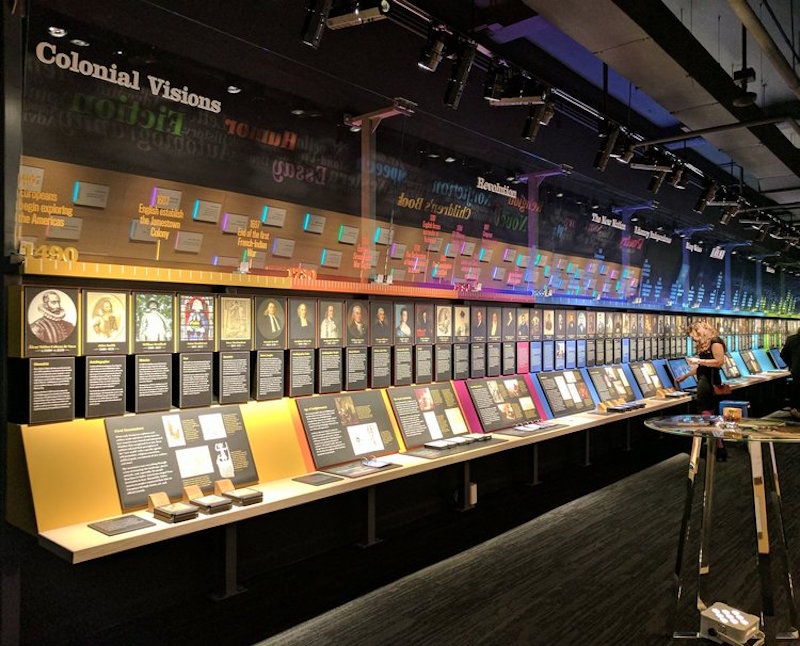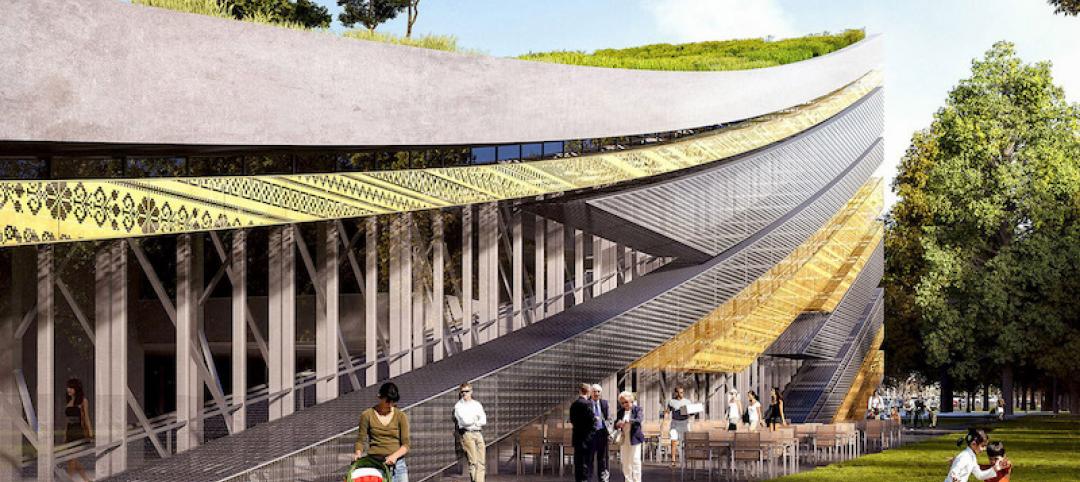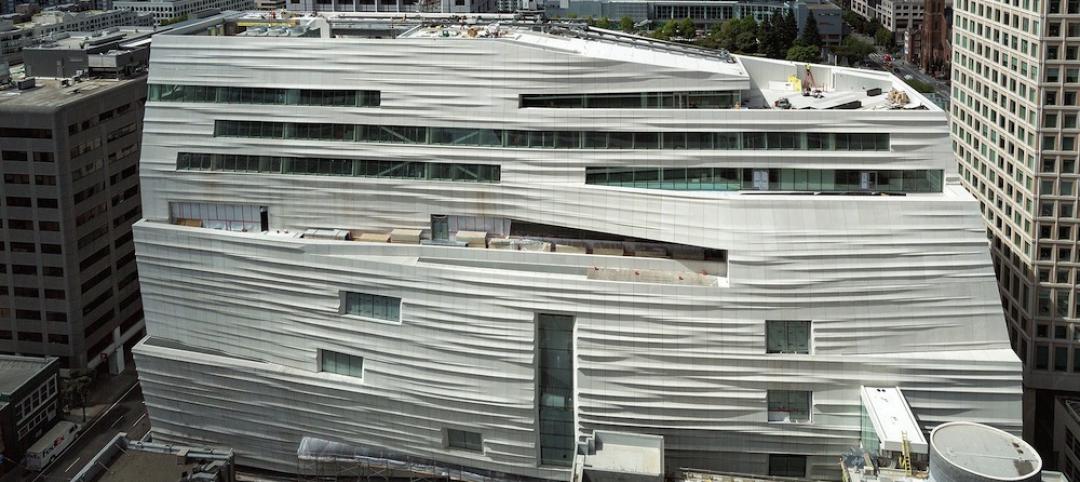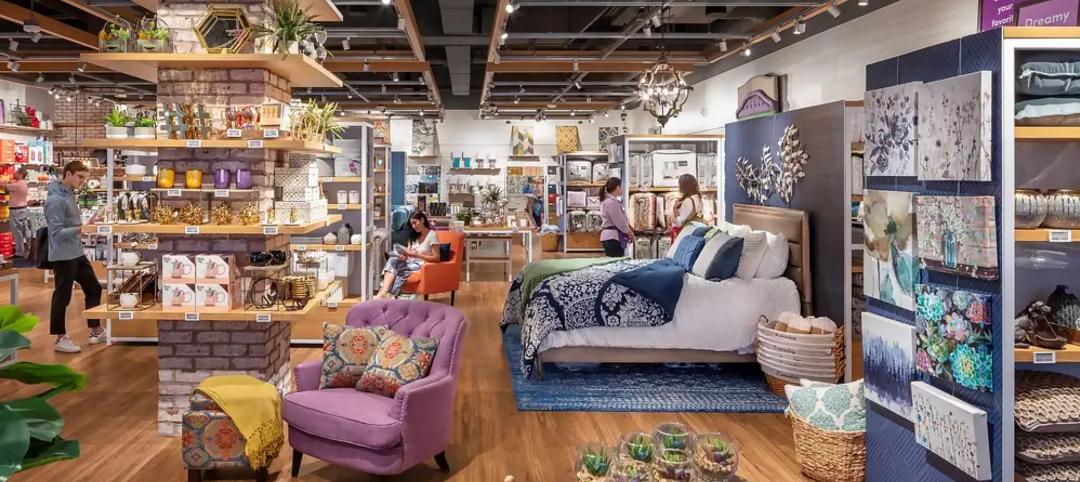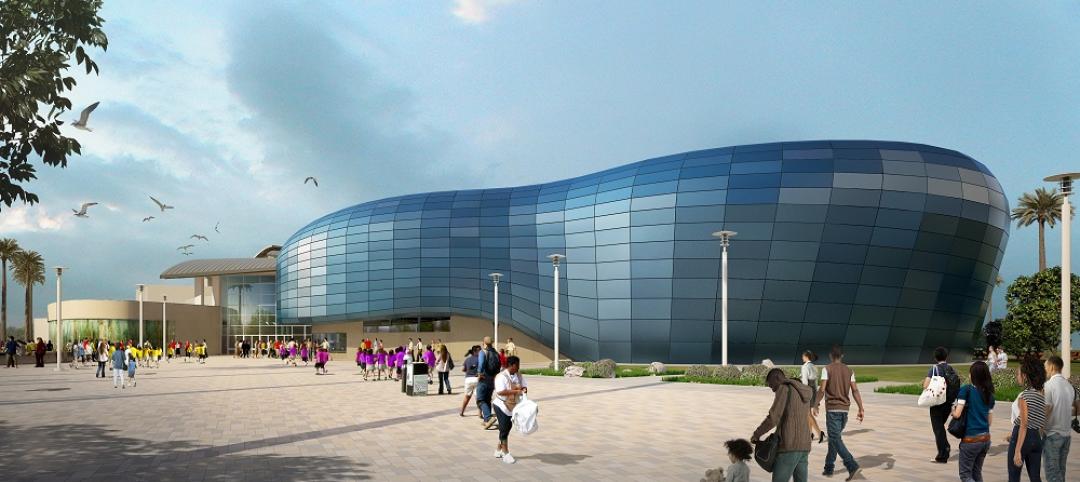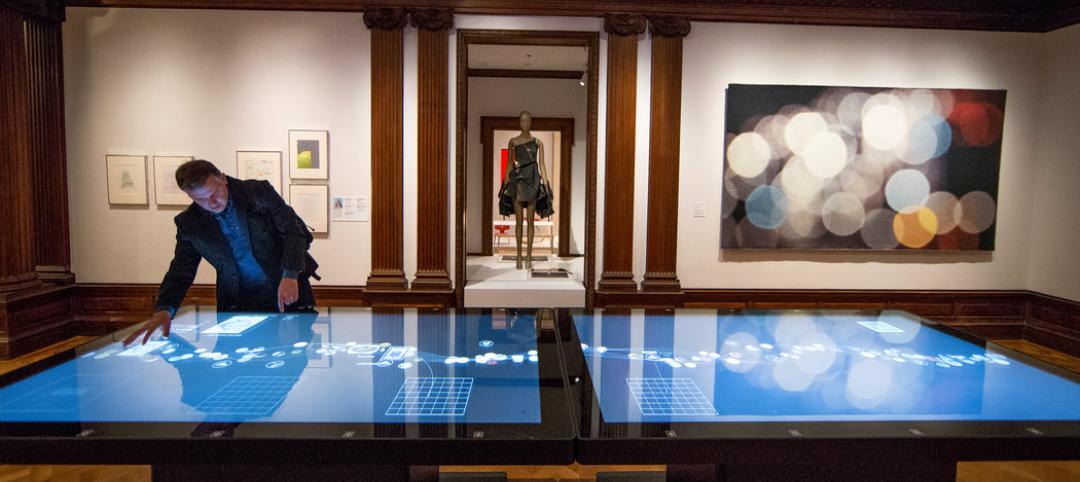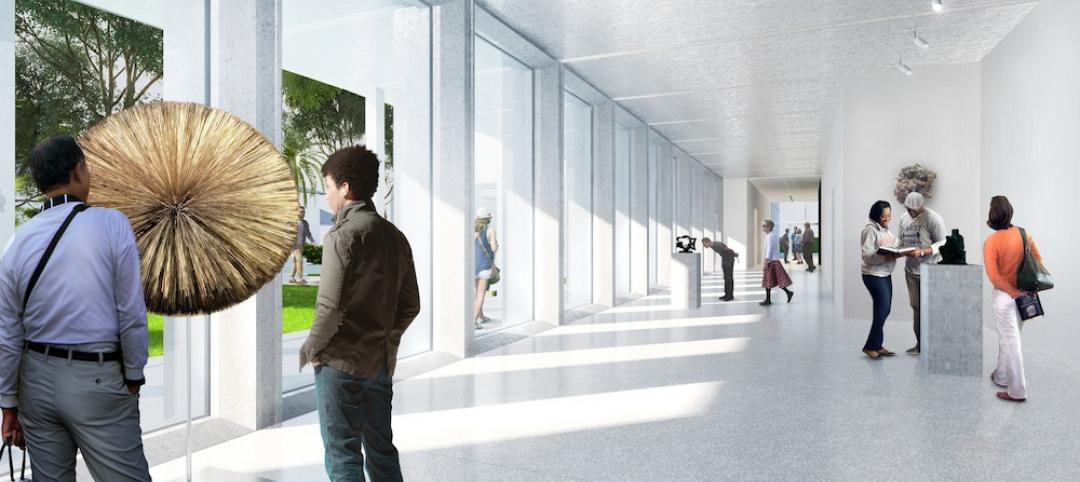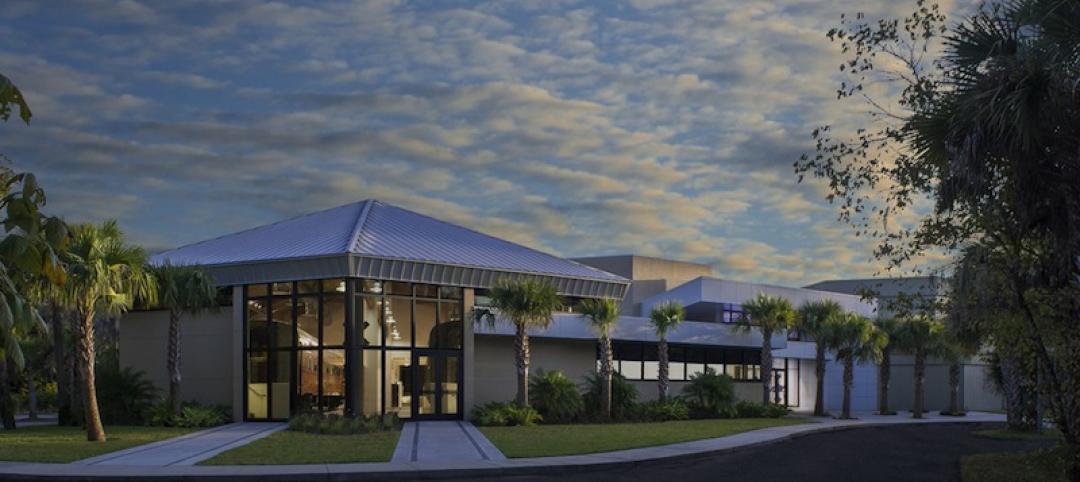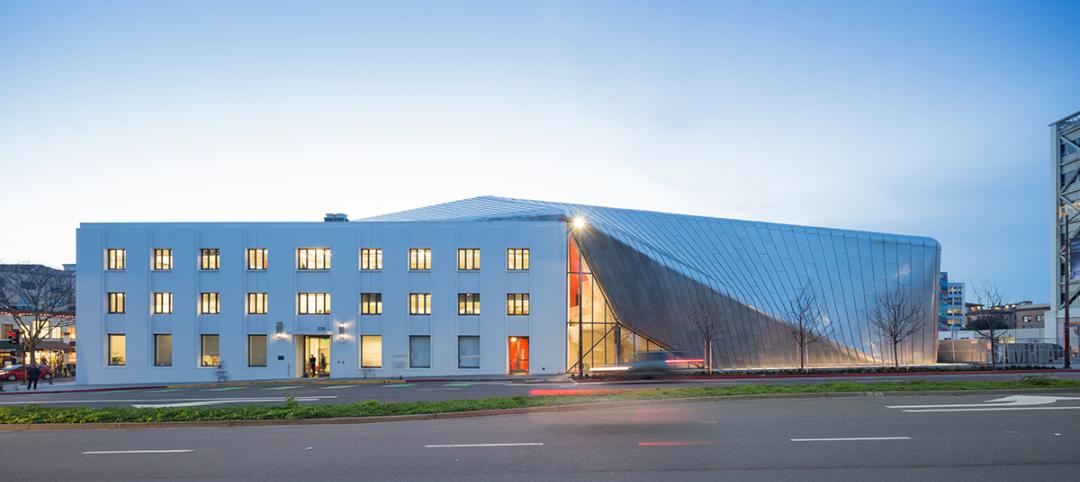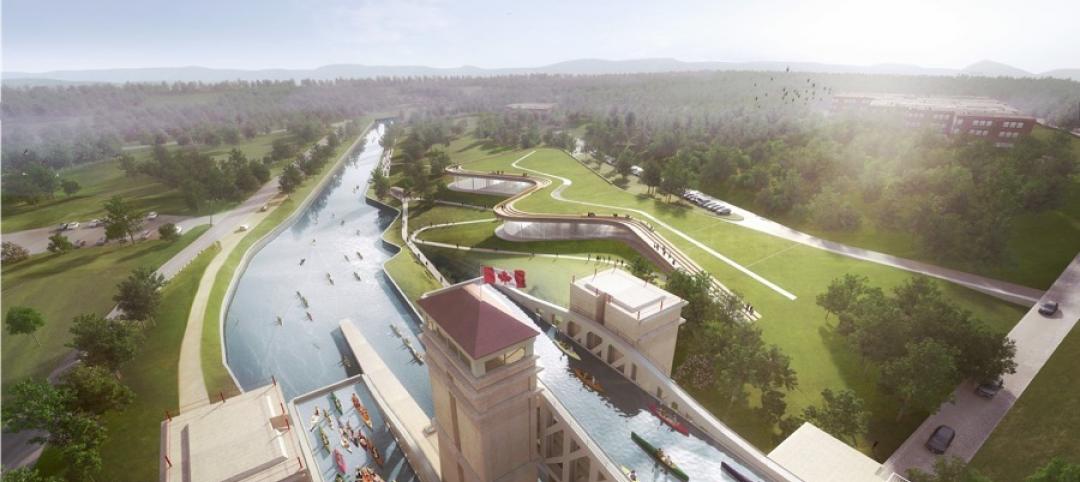Located in an ordinary building whose bottom floor is occupied by a bank at 180 N. Michigan Avenue is a museum the likes of which can’t be found anywhere else in the country. The American Writers Museum, a project seven years in the making, officially opened to the public on May 16.
According to project designer Amaze Design, the museum is “the first national museum in the United States dedicated to the celebration of American writers and the exploration of their influences on our history, our identity, our culture, and our daily lives.”
A small museum dedicated to American writers sitting one floor above a bank in a non-descript Chicago building may at first sound like the type of museum you stumble across while on a cross-country road trip: the New England Maple Museum, the National Mustard Museum, or the broadly (and most definitely aptly) titled Museum of the Weird. The American Writers Museum could very easily have taken on the appearance of a musty, forgotten corner of a local library; the acidic, vanilla-laced smell of old books heavy in the air.
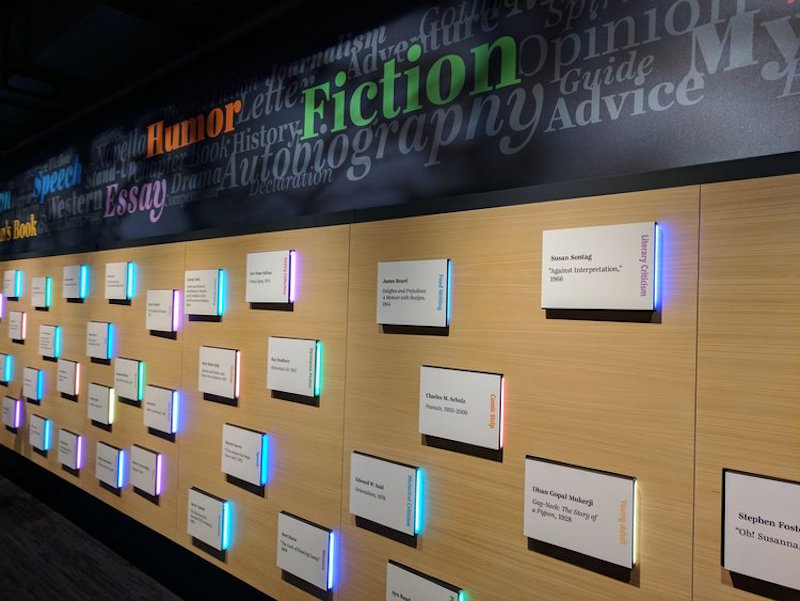 Photo courtesy of Amaze Design.
Photo courtesy of Amaze Design.
The museum didn’t go in that direction, however. Instead, perhaps ironically, the museum dedicated to the greatest Americans to ever lay ink on paper integrates a heavy dose of technology into the museum’s 10,000 sf.
Bright colors, colored lights, and large, interactive touchscreens highlight the space. “The museum covers the breadth and range of American writers through unexpected, in-depth, immersive, and hands-on exhibits,” according to the architect.
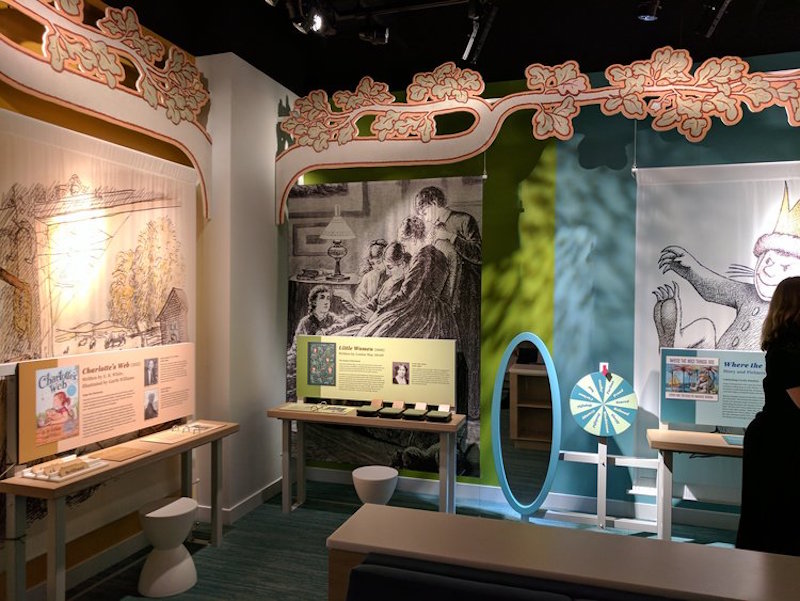 Photo courtesy of Amaze Design.
Photo courtesy of Amaze Design.
Included in the museum are permanent exhibitions highlighting Chicago writers, a children’s literature gallery, and a “Word Waterfall.” Current temporary exhibits include Jack Kerouac’s original manuscript scroll for On the Road and Palm, an exhibit inspired by the life and work of the American poet W.S. Merwin.
Amaze Design was responsible for all design, research, media production, and fabrication and installation, which were accomplished through collaborative partnerships.
The project had a budget of $10 million.
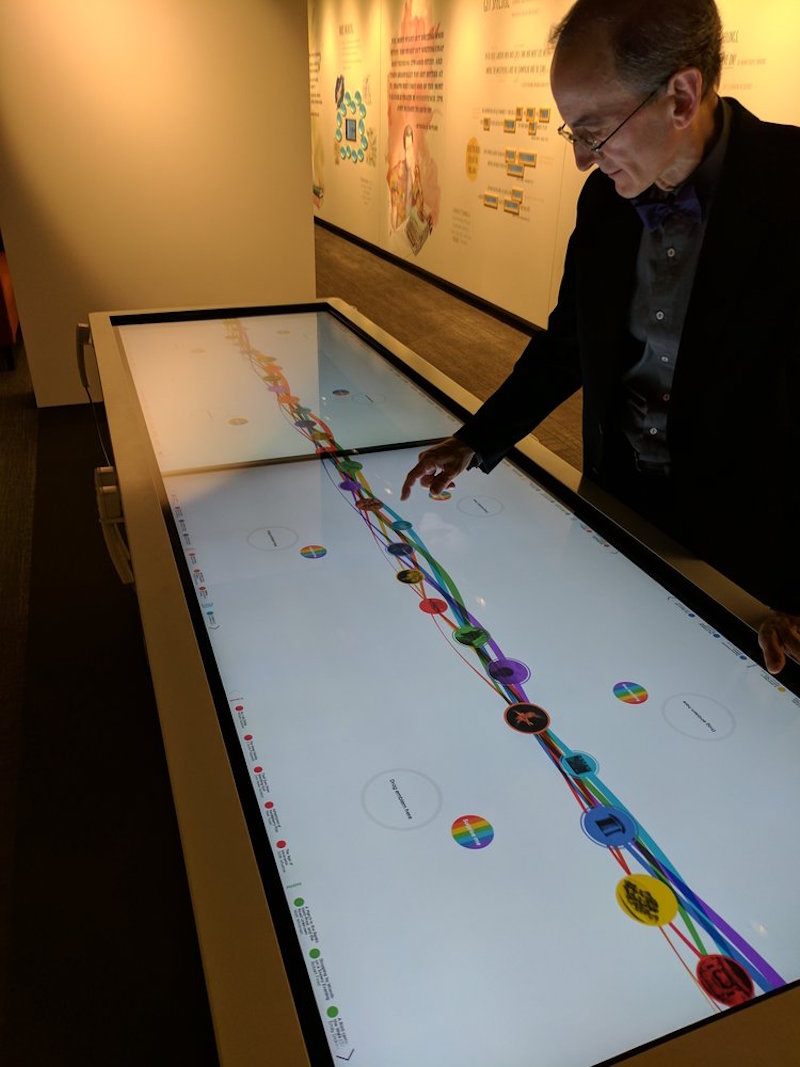 Photo courtesy of Amaze Design.
Photo courtesy of Amaze Design.
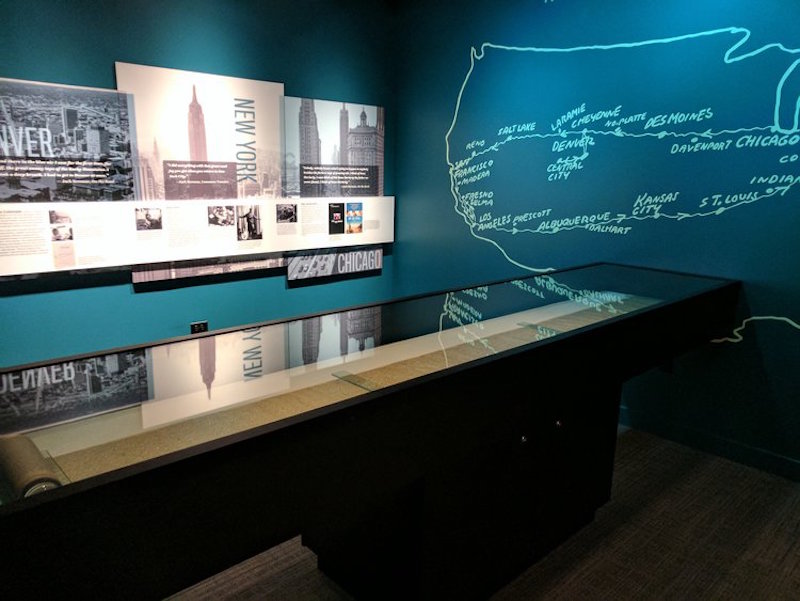 Photo courtesy of Amaze Design.
Photo courtesy of Amaze Design.
Related Stories
Education Facilities | Jun 1, 2016
Gensler reveals designs for 35-acre AltaSea Campus at the Port of Los Angeles
New and renovated facilities will help researchers, educators, and visitors better understand the ocean.
Museums | May 26, 2016
Napur Architect wins design contest for Budapest’s Museum of Ethnography
The Museum of Ethnography’s new home will be part of a large museum complex in Budapest’s City Park
Museums | May 2, 2016
Rippled facade defines Snøhetta’s San Francisco Museum of Modern Art expansion design
The museum will have three times as much gallery space as before, along with a new theater, atrium, and living wall.
Cultural Facilities | Apr 12, 2016
Studio Libeskind designs angular Kurdish museum rich with symbolism
The museum consists of four geometric volumes separated by somber and uplifting divisions.
Museums | Mar 24, 2016
Aquarium of the Pacific unveils whale of a project
Designed by EHDD, the 18,000-sf, whale-shaped Pacific Visions will have gathering spots, galleries, and a theater with a large, curved screen.
Museums | Mar 3, 2016
How museums engage visitors in a digital age
Digital technologies are opening up new dimensions of the museum experience and turning passive audiences into active content generators, as Gensler's Marina Bianchi examines.
Museums | Feb 12, 2016
Construction begins on Foster + Partners’ Norton Museum of Art expansion project
The Florida museum is adding gallery space, an auditorium, great hall, and a 20,000-sf garden.
Architects | Feb 11, 2016
Stantec agrees to acquire VOA Associates
This deal reflects an industry where consolidation is a strategic necessity for more firms.
Museums | Feb 5, 2016
Diller Scofidio + Renfro transforms old Art Deco building into a museum at UC Berkeley
The Berkeley Art Museum and Pacific Film Archive, which opened in late January, contains a theater, lab, and galleries. It was once a printing plant.
Museums | Jan 22, 2016
Canadian Canoe Museum selects Heneghan Peng Architects’ design for new location
The single-story structure is designed for sustainability as well as function.


